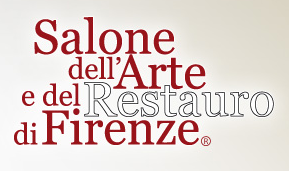Thursday, November 8, 2012 hours 12:15
The project SISMILE
 Kandilli Observatory and Earthquake Research Institute, Pera Fine Arts Vocational Training Institute, Technical University of Varna, Romanian Society for Lifelong Learning, The Institute of Training & Career Guidance (Iekep), The European Furniture Manufacturers Federation, Palazzo Spinelli per l'Arte e il Restauro Associazione No Profit, Aidima Furniture, Wood and Packaging Technology Institute. Third Country Partner: Yamaguchi University, Graduate School of Sci and Engr. Kandilli Observatory and Earthquake Research Institute, Pera Fine Arts Vocational Training Institute, Technical University of Varna, Romanian Society for Lifelong Learning, The Institute of Training & Career Guidance (Iekep), The European Furniture Manufacturers Federation, Palazzo Spinelli per l'Arte e il Restauro Associazione No Profit, Aidima Furniture, Wood and Packaging Technology Institute. Third Country Partner: Yamaguchi University, Graduate School of Sci and Engr.
Thursday, November 8, from 12:15 p.m. to 1:00 p.m - Saletta Rosi
Cavaniglia Pavilion, Fortezza da Basso, Florence
The project SISMILE aims to create an online aims to create an online training programme to increase the vocational skills of the workers and / or craftsmen who are responsible to product or/and install the non structural elements (furniture) which cause high risk against the life and property safety during the earthquakes inside the buildings. This system will create many target groups through the activation of various model of simulation which will show the effects of the the interaction between the various non structural elements against the life and the safety of the inhabitants during a tremor. The content of the training will be multilingual (EN, TR, IT, SP, GR, BU, RO) and national and it will highlight the cultural differences among the partners of the countries involved. The training program, created through the collaboration of eight organizations coming from 7 countries, can be used as part of existing non-formal and formal training systems.
To face the current challenges in the furniture industry, training programs need to be updated and able to manage a positive cost-benefit analysis, also through the implementation of training and education specific programmes. Unfortunately, the current education programs are mainly based on the technical side of production. During the last years the design approach in the production of furniture has been in continuous development, but many statistics show that this is no longer enough to compete with the Asian market which is the largest market in furniture consumption.
The globalization is changing the structure of the intensive industries, such as, for example, the furniture industry. Moreover, there is an important theme that has not been considered as a subject of designing for the production of furniture "the design of non-structural elements in buildings against the risks caused by the earthquakes."
The results of the project are as follows:
1) Operators of the furniture sector will be trained and informed about new techniques of application of non-structural elements in buildings subjected to seismic hazards.
2) Producers and workers qualified will apply new techniques to the buildings located in earthquake-prone areas with important results, even in economic terms.
3) Increase of the employability in the furniture industry.
4) The application of these techniques decrease the risk of loss of life and damage to architectural heritage.
Event Responsible:
Speakers: Emanuele Amodei, Paolo Pieri Nerli
web site |